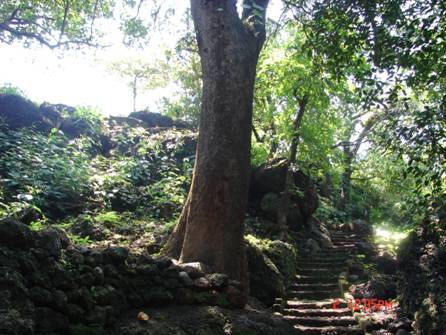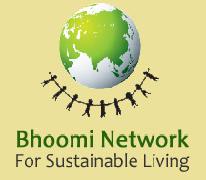Sustainability
Water management in the Vijaynagar empire - Paper presented at the National Seminar on Water and Culture (2007)
Posted on 14 Feb, 2011 01:55 AMThis paper focuses on water management techniques used in two tanks constructed by the kings of the Vijaynagar Empire.
The first example taken, is that of the Anantraj Sagar built by the son of the minister of Harihar. The lake is still in use and there are inscriptions on stone near it which provide a thumb rule to constructing lakes. Construction of this lake began in 1369 and was completed in 2 years. The paper states that the length of the dam was 5000 dand, width was 8 dand and the height was 7 dand (One dand is about one metre).
Groundwater assessment using remote sensing data - A case study of the Bhadra river basin - Paper presented at the National Seminar on Water and Culture (2007)
Posted on 13 Feb, 2011 11:21 PMThis method is a mathematical model, in which all the components in the water balance equation are known, and the only component which is considered unknown is the rainfall recharge.
Summary report - Maharashtra government consultation on Ratnagiri and Sindhudurg districts - MoEF
Posted on 31 Jan, 2011 12:12 AMContent Courtesy: Ministry of Environment and Forests, Government of India
Author: Madhav Gadgil
In view of the environmental sensitivity and ecological significance of the Western Ghats region and the complex nature of its geography, as well as the possible impacts of climate change on this region, the Ministry of Environment & Forests, Government of India constituted a Western Ghats Ecology Expert Panel to assess the current status of ecology of the Western Ghats region. The panel aimed at identifying ecologically sensitive areas in the Western Ghat region and making recommendations for the conservation, protection and rejuvenation of the region. This report presents a brief summary of the key issues that were dwelt on to understand the situation of the Western ghats and the key findings of the evaluation.
Regenerating natural resources and rural livelihoods in rainfed areas of India: A civil society consultation by WASSAN to discuss priorities for the twelfth five year plan
Posted on 26 Jan, 2011 09:13 PM A civil society consultation was held on “Regenerating natural resources and rural livelihoods in rainfed areas of India” by WASSAN at Hyderabad in December 2010 to discuss priorities for the twelfth five year plan. The Planning Commission, Government of India has been steering the process of development in India by conceptualizing five year plans and had sought inputs from civil society organizations, activists groups, networks of CBOs / NGOs, donors and others for preparing an approach paper for twelfth plan.
A civil society consultation was held on “Regenerating natural resources and rural livelihoods in rainfed areas of India” by WASSAN at Hyderabad in December 2010 to discuss priorities for the twelfth five year plan. The Planning Commission, Government of India has been steering the process of development in India by conceptualizing five year plans and had sought inputs from civil society organizations, activists groups, networks of CBOs / NGOs, donors and others for preparing an approach paper for twelfth plan.
The objective of the consultation workshop was to contribute to the process of defining broad contours of twelfth plan with a focus on rural livelihoods the thrust area being policy framework, funding support, institutional arrangements etc., by -
- Consolidating the lessons from good practices in promoting and protecting rural livelihoods in the country, that could be integrated in twelfth five year plan.
- Systematically articulating issues and concerns (bottlenecks) in promoting and protecting rural livelihoods, which could be addressed in the twelfth five year plan.
Training course on livelihood enhancement through sustainable natural resource management in drylands, ICAR, 17th Feb to 2nd Mar 2011, Hyderabad
Posted on 24 Jan, 2011 12:33 PMOrganizer: Indian Council for Agricultural Research
Venue: Central Research Institute for Dryland Agriculture (CRIDA), Santoshnagar, Hyderabad
Sustainable water management initiatives in Konkan under threat - A report
Posted on 21 Jan, 2011 02:09 PMGuest Post by: Parineeta Dandekar
At the first sight, Daarche Paani (‘water at the doors’) appears unreal.. on a small flat plateau called ‘Sadaa’ in konkan, an elegant cobbled walkway leads a puzzled visitor to stairs carved in stone, which go down to an ancient grove, and here is an intricate system of tanks, channels and falls which supplies water to the Panderi village and goes down as a free flowing stream, to irrigate a plantation of arecanut, pepper and mangoes in a village called Gudaghe. When I visited the place, I could see three eminent visitors, a silent lady washing her load of clothes, a fairy bluebird splashing at a tank and a huge moonmoth in one of the trees.
 Stone walkway and ancient mango trees leading to Daarche Paani.
Stone walkway and ancient mango trees leading to Daarche Paani.
Photo: Parineeta Dandekar
The Bhoomi Conference - 2011, Jan 21 & 22, Bangalore
Posted on 19 Jan, 2011 01:41 PM
Organizer: Bhoomi Network for Sustainable Living
Venue: St. John's Auditorium, Koramangala, Bangalore
24th national convention of IPHE (India) on "Water & sanitation utility services in India and their health implications" held in Bhubaneshwar
Posted on 18 Jan, 2011 11:49 PMThe 24th National Convention of Institution of Public Health Engineers (India) on the theme “Water & Sanitation Utility Services in India and their health implications” will be organised by IPHE(I), Regional Centre, Bhubaneswar during 12th -13th February,2011.
Eastern Himalaya freshwater biodiversity assessment report released by IUCN and Zoo Outreach Organisation
Posted on 18 Jan, 2011 11:44 PMDear all,
IUCN, with Zoo Outreach Organisation, have today published a new report, 'The status and distribution of freshwater biodiversity in the Eastern Himalaya', which is available online here
India s groundwater challenges and the way forward
Posted on 18 Jan, 2011 11:42 PMIndia’s Groundwater Challenge and the Way Forward
P S Vijay Shankar , Himanshu Kulkarni , Sunderrajan Krishnan
The groundwater crisis is acquiring alarming proportions in many parts of the country. Strategies to respond to groundwater overuse and deteriorating water quality must be based on a new approach involving typologising the resource problems and redefining the institutional structure governing groundwater. This approach is based on the notion of groundwater as common property.





